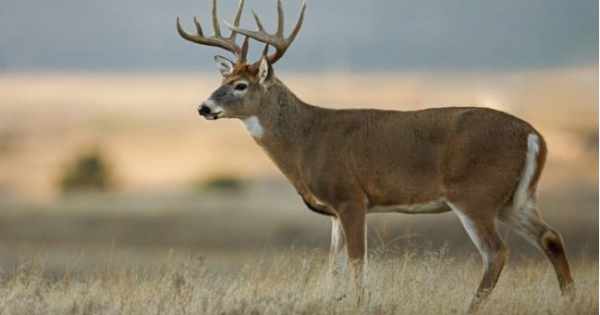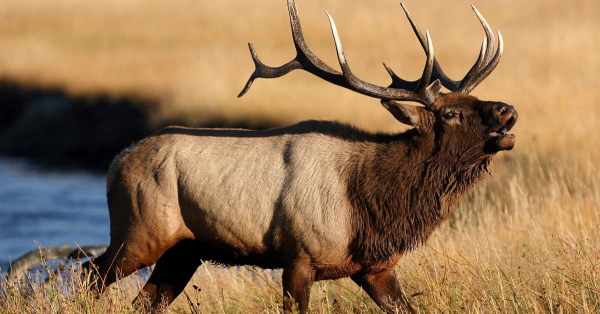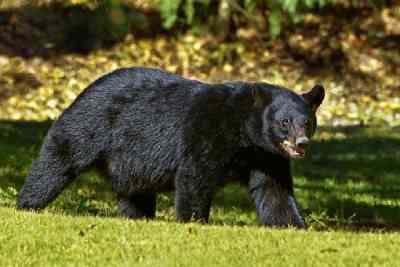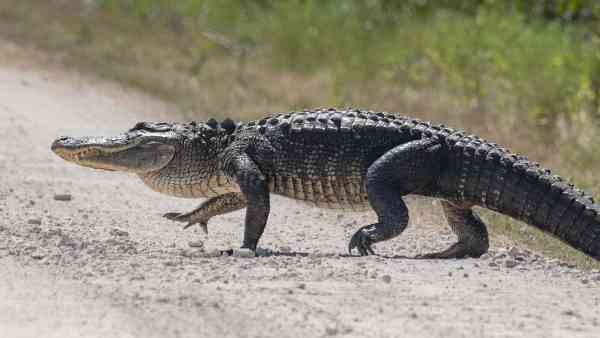Welcome to Animals of Arkansas, a land renowned as “the Natural State” for its stunning landscapes and diverse terrain. Nestled between the Ozark Mountains and the Ouachita Mountains, Arkansas offers awe-inspiring mountain vistas, deep valleys, and pristine mountain streams that sparkle with crystal-clear waters.
Table of Contents
Lush forests and fertile lowlands add to the captivating scenery. Moving towards the lower parts of the state, you’ll encounter the Mississippi Delta and the Gulf of Mexico, as well as various wetlands, such as cypress swamps and slope wetlands.
Arkansas experiences a mostly subtropical climate, which fosters remarkable growth and abundant greenery. Despite this, the state enjoys distinct four seasons. Summers are humid, springs are dry, autumns showcase vibrant colors, and winters often bring snow. This dynamic climate contributes to the richness of the mountains and forests, which are teeming with extraordinary wildlife.
Here are ten must-see animal species that call Arkansas home.
White-tail Deer

The official state mammal of Arkansas is the white-tailed deer, showcasing a remarkable color transformation throughout the seasons. During summer, their coats display a reddish-brown hue, which shifts to a dull greyish-brown color as winter sets in. Male deer boast impressive antlers during the summer and fall months, which grow annually and shed during wintertime. Their name, “white-tailed,” originates from the white underside of their tails.
White-tailed deer are stunning creatures, exuding both beauty and strength. Fully grown adults weigh around 300 pounds. They exhibit incredible agility, capable of sprinting up to 40 miles per hour, leaping to heights of 9 feet, and swimming at speeds of up to 13 miles per hour.
These deer possess scent glands between the two parts of their hooves on all four feet, which they use for communication and during the rutting season. While they possess excellent eyesight and hearing, their sense of smell is crucial in detecting potential dangers.
Their diet primarily consists of various vegetation, including twigs, buds, poplar, aspen, sassafras, birch, and other shrubs. In desert areas, they consume prickly pear cactus, drama, yucca, and other available plants. During scarce food conditions in winter, they may resort to eating conifers.
White-tailed deer are primarily crepuscular, meaning they feed mainly before dawn and resume in the late afternoon until evening. They are known for their nervous and shy nature. Despite this, they can be seen grazing together in some herds, although they are generally considered solitary creatures.
These deer exhibit exceptional swimming abilities and often seek refuge in large lakes and streams to evade predators. They can adapt to various habitats, ranging from dense woods to hammock swamps, farmlands, and desolate regions, coexisting with other animals in Arkansas.
Elk

In the Buffalo National River area of Arkansas, a truly remarkable natural treasure awaits: the Arkansas elk herds. Once thriving in the region, elk faced near extinction due to increased human presence, hunting, and land development. Thankfully, the Arkansas Game and Fish Commission (AGFC) intervened and successfully reintroduced elk to Arkansas.
Today, approximately 500 elk roam freely in the Buffalo National River area, making it an ideal destination to witness these magnificent creatures. The best time to observe them is during the fall season. Male elk, also known as bulls, can boast impressive antlers that can weigh up to 40 pounds, showcasing the native beauty of a species once lost in Arkansas.
Elk rank as the second-largest species of deer globally, surpassed only by the moose. During wintertime, both male and female elk grow a mane of dark hair around their necks, adding to their majestic appearance.
Elk prefer habitats such as forests, woodlands, and mountainous regions, while some species can be found in grasslands and moorland areas. In spring, they tend to migrate to higher elevations to access new growth for their diet. In addition to leaves and grass, elk also consume tree bark, consuming approximately 9.1 kg of plant matter each day.
The successful reintroduction of elk in Arkansas exemplifies the importance of conservation efforts in preserving and restoring the natural balance of wildlife in the region. The sight of these impressive animals thriving once again is a testament to the commitment of organizations like the AGFC to preserving the rich biodiversity of Arkansas.
Bald Eagle

The bald eagle, with its distinct features of a brown body, yellow hooked beak, and striking white head, is an unmistakable and majestic bird. Since 1782, it has proudly held the honor of being the national emblem of the United States. Although its numbers significantly declined in the past, successful conservation efforts have revitalized its population, allowing it to continue as the symbol of American strength and freedom.
Impressive in size, the bald eagle boasts a wingspan of 7 feet and weighs around 15 pounds. It prefers to reside near a constant water source, as its diet mainly consists of fish, snakes, turtles, ducks, rabbits, carrots, and muskrats. Employing its exceptional sense of sight and powerful talons, the bald eagle swoops down with great speed to capture its prey, often reaching speeds of up to 100 mph when diving. Once it captures its meal, its hooked beak efficiently extracts the flesh before consumption.
The bald eagle is also an adept flier, capable of soaring to heights of about 10,000 feet, effortlessly gliding for extended periods using air currents. Observing these majestic birds in flight is a true pleasure.
When it comes to nesting, the bald eagle prefers to make its home in large trees near bodies of water. Their nests, known as eyries, are impressive structures where they raise their chicks.
Although the bald eagle has some natural predators, its population is no longer endangered, thanks to conservation efforts that have successfully protected this iconic species. As a result, people can still delight in the presence of this magnificent bird, which stands as a symbol of resilience and natural beauty in the United States.
Ivory-billed Woodpecker

The ivory-billed woodpecker holds the distinction of being the largest woodpecker species north of Mexico and ranks as the third-largest woodpecker globally. Tragically, this unique and extraordinary bird faces critical endangerment due to the destruction of its forest habitat. At one point, it was believed to have gone extinct in the mid-20th century, but there were some reported sightings in Arkansas several years ago; however, it has not been relocated since then.
These woodpeckers are known to dwell in swamps but can also be found atop trees. Their plumage predominantly consists of shiny black-purple feathers with distinct white lines extending from their cheeks to their neck. They sport a prominent crest, strong straight bills, and long hard-tipped barbed tongues. They have an affinity for hardwood swamps and pine forests.
During the night, ivory-billed woodpeckers seek shelter in individual roost holes and venture out at dawn to forage and engage in their activities. They typically remain inactive during midday and resume their feeding behaviors in the late afternoon before returning to their roosts.
With their massive bills, they skillfully hammer and peel off the bark of trees, and they are known for their social nature, often gathering in groups to feed together on a single tree. Occasionally, they may move to areas with substantial amounts of dead wood, as it often indicates an abundance of beetle larvae, which they love to consume. These woodpeckers are omnivores, with a preference for beetle larvae, and they also eat the fruit of pecans, acorns, southern magnolia, nuts, and poison ivy seeds.
Due to their elusive nature and scarcity, the ivory-billed woodpecker has earned the nickname “Holy Grail bird.” The challenge of finding and observing these magnificent birds adds to their allure and mystique. Their survival is of utmost importance, and conservation efforts are crucial to protect this extraordinary species from disappearing entirely.
Black Bear

The black bears in Arkansas have experienced a positive resurgence and are no longer at dangerously low levels. Over time, the state’s efforts have led to a successful comeback of this valuable animal, which plays a crucial role in the ecosystem.
Black bears are typically found in forested areas with thick ground cover, providing them with a diverse diet of fruits, vegetation, and nuts. During winter, they hibernate in dens, relying on stored fat to sustain them through their dormant period. As omnivores, their diet is primarily plant-based, including fruit, nuts, herbs, grasses, honey, berries, seeds, shoots, and various vegetation. However, they are opportunistic feeders and may also consume fish, insects, and small mammals.
Their appearance can vary, with most individuals having a black coat, but some may be dark brown, cinnamon-colored, or even yellow-brown. Black bears can reach lengths of about 7 feet from nose to tail and stand around 3 feet at the shoulders. They have small eyes, rounded ears, a relatively long snout, and a short tail. Adult males can weigh around 300 pounds.
In the northern regions, black bears display their fishing prowess by catching salmon in streams. They typically become active just before sunrise, take short naps during the day, and retire for the night a few hours after sunset. Many bears become nocturnal to avoid encounters with humans or other bears.
An impressive aspect of black bears is their ability to efficiently hibernate for months without eating, drinking, urinating, or defecating. During this time, they remain in a state of dormancy, relying on their stored fat for sustenance.
Black bears are solitary creatures, usually living alone, and are known for their agility. They can run at speeds of about 30 miles per hour and are adept swimmers.
Thanks to conservation efforts and protective measures, the black bear population in Arkansas has rebounded, contributing to the state’s biodiversity and ecological balance.
Nine-banded Armadillo

The nine-banded armadillo, a fascinating creature, has an average lifespan of about eight years and weighs around 6.5 kg. It is a medium-sized mammal distinguished by its unique armored shell, covered in horny scales known as “scutes.” With a small head that tapers to a point, long snout, and large, pointed ears, the armadillo possesses distinctive features. Its front feet are equipped with large, thick claws that aid in its digging abilities.
The armadillo’s sparse fur makes it highly sensitive to temperatures, and it can swim and run with agility. Crossing streams is no challenge for the armadillo, as it can effortlessly walk underwater to reach the other side. This creature prefers living in pine forests or rainforests, seeking shaded woodlands as its habitat. It avoids cold and dry environments and favors sandy and loamy soil, which is easier for it to dig.
Being a solitary creature, the armadillo primarily operates at night, but during cloudy and cold weather, it may venture out in the daytime. Unlike some animals, armadillos do not hibernate. While their eyesight may not be exceptional, their sense of smell is keen, aiding them in foraging for food.
As insectivores, armadillos rely on their snouts to dig in loose soil for grubs, worms, ants, and termites. Their long, sticky tongue allows them to catch and consume these insects by wrapping them up in their language. They also enjoy eating tubers, as well as amphibians and reptiles.
Despite their armored defense, armadillos have several predator enemies, including coyotes, pumas, wolves, black bears, alligators, bobcats, and jaguars. However, they play a beneficial role in controlling certain agricultural pests by feeding on them.
The nine-banded armadillo is a remarkable creature, with its unique appearance and adaptive abilities, making it an interesting member of the animal kingdom.
Mockingbird

The mockingbird has held the honor of being the Arkansas State Bird since 1929. It’s renowned for its remarkable ability to imitate the songs of numerous other birds, making its calls diverse and captivating. This bird measures around ten inches in length, including its long tail. Its light grey coat with white underneath contrasts with darker grey wings and tail adorned with white patches. Interestingly, both males and females share the same appearance.
Being a true songbird, the mockingbird’s vocal talents are outstanding, and it is not uncommon for it to sing continuously throughout the night. This melodious nature has earned it much admiration.
The mockingbird is also known for its fearless protective instincts, vigorously defending its territory and nest from potential threats. It fearlessly swoops down on any predator that comes too close to its protected area.
Regarding its preferred habitats, the mockingbird enjoys open grassy areas where it can search for food or thick, thorny shrubs that offer safe hiding spots. Males often seek out high perches to sing and guard their territories. In gardens, they particularly favor areas with winter berries, finding joy in spending time in such environments.
The mockingbird’s diet is varied and includes insects, ants, beetles, spiders, grasshoppers, as well as seeds and berries. This diversity in its food choices helps sustain its energetic and vibrant nature.
With its multifaceted talents, from musical abilities to protective instincts, the mockingbird serves as a delightful and valuable addition to Arkansas’ wildlife.
Thirteen-lined Ground Squirrel

The thirteen-lined ground squirrel, a charming little creature, can be found in various states of the USA, including Arkansas. It favors open areas with short grass as its preferred habitat, and sandy or loamy soil provides the ideal conditions for its burrowing activities. You’ll often spot them near golf courses, cemeteries, pastures, and roadsides.
Growing to about 300 mm in length, the thirteen-lined ground squirrel boasts distinct alternating dark brown and tan stripes running from the nape of its neck to the base of its tail. Its name is derived from the thirteen lines on its back, which consist of either seven broad dark brown stripes alternating with six thin tan bands or seven yellow stripes alternating with six dark brown stripes.
This adorable creature has short ears, and its tail is thin yet bushy. It typically sits erect with its head pointed up, exhibiting its alert and inquisitive nature. These little squirrels have an average lifespan of around seven years.
The thirteen-lined ground squirrel is most active during midday and on sunny days. They construct burrows for hibernation and nesting purposes. To prepare for the winter months of hibernation, they put on weight by consuming ample food. During hibernation, they lose a significant amount of body weight.
In terms of communication, they use scented alarm calls and secretions to interact with other squirrels. When they encounter one another, they touch their noses and lips together, which is a form of social behavior.
The name “Spermophilus” means “seed lover,” and it holds true for this squirrel as they have a preference for consuming seeds of plants. Additionally, they may also enjoy eating crop species such as wheat and corn, as well as grass and clover.
As with most small animals, the thirteen-lined ground squirrel faces threats from carnivores, snakes, and raptors. Despite these challenges, their adaptable nature and unique communication methods contribute to their survival in various habitats, making them an interesting addition to the diverse wildlife of Arkansas.
Western diamond-backed Rattlesnake

Western diamond-backed rattlesnakes are native to the Ouachita Mountains and southwestern Ozark highlands of Arkansas. These venomous snakes are most active from April to October, especially during summer nights. Recognizable by their heavy-looking bodies, triangular-shaped heads, and two dark diagonal lines on each side of their faces, these snakes derive their name from the diamond-shaped patterns running along their backs.
Western diamond-backed rattlesnakes are highly adaptable when it comes to their habitat, as they can be found in deserts, plains, forests, rocky hillsides, and even coastal areas.
In terms of diet, they are not particularly selective and will feed on a variety of prey, including birds, lizards, gophers, rabbits, rats, and other small animals. As predators themselves, they face threats from various other creatures that consider them a danger. When encountered, some animals, like eagles, hawks, coyotes, bobcats, and foxes, may attempt to trample or attack the rattlesnake.
During the hot daytime hours, Western diamond-backed rattlesnakes seek refuge by coiling up in low-growing shrubs or under rocks, and they may also use burrows created by other animals. In the winter, they hibernate in caves or similar sheltered locations.
These snakes have a lifespan of about 15 years and can grow to lengths of up to 7 feet. Their venomous nature and unique rattling tail serve as defensive mechanisms to warn potential threats and predators. Despite their intimidating reputation, Western diamond-backed rattlesnakes play a vital role in the ecosystem by controlling populations of rodents and other small animals.
Alligator

Alligators have been a part of Arkansas’ natural landscape for many years, but their numbers were once depleted due to unregulated hunting and habitat destruction. However, conservation efforts have helped in their recovery.
Being cold-blooded animals, alligators cannot tolerate freezing weather, and during the winter months, they do not eat. Instead, they spend their days basking in the sun to trap heat and regulate their body temperature. As long as humans do not provoke or attempt to feed them, alligators typically do not pose a threat to humans.
Arkansas Post’s wetland marshes, bayous, and low-lying terrain provide excellent habitat for alligators. They can also be found in the swamps of Millwood State Park. As carnivores, their diet consists of invertebrates, fish, frogs, and small mammals. With sharp teeth and powerful jaws, alligators can even crack open a turtle’s shell. Interestingly, they possess two large teeth that protrude when their mouths are closed.
Alligators can grow to be about 12 feet in length and weigh as much as 1000 pounds. Their long and powerful tails help propel them through the water, and their webbed feet aid in swimming. With a potential lifespan of up to 50 years, they usually hibernate during the winter and start becoming more active around April.
As a vital part of the ecosystem, alligators play a role in controlling populations of certain animals and contribute to the overall biodiversity of Arkansas’ natural habitats. With protective measures in place to ensure their conservation, alligators continue to thrive and add to the rich wildlife diversity in the state.
FAQs
What is the most common animals in Arkansas?
The most common animals in Arkansas include white-tailed deer, squirrels, rabbits, raccoons, opossums, and various bird species like mockingbirds, cardinals, and bluejays.
What large animals are in Arkansas?
Some of the large animals found in Arkansas include black bears, white-tailed deer, alligators, bobcats, and coyotes.
What wild animals can you have in Arkansas?
In Arkansas, you can find a wide variety of wild animals, including black bears, white-tailed deer, armadillos, bobcats, coyotes, foxes, alligators, and numerous bird species such as eagles, hawks, and turkeys.
Final Words
Arkansas is home to a diverse array of fascinating and captivating animals, each contributing its own unique charm to the state’s rich natural tapestry. From the elusive ivory-billed woodpecker, once thought to be lost but now making a hopeful resurgence, to the enchanting mockingbird, serenading the land with its melodious calls, and the formidable alligator, ruling the wetland marshes and bayous with its ancient presence.
The Western diamond-backed rattlesnake, with its distinctive diamond patterns, adds an element of awe and respect to the rugged landscapes. Meanwhile, the gentle white-tailed deer roams gracefully through the breathtaking mountains, symbolising the harmonious coexistence between nature and its inhabitants.
Reference:
- https://www.southwestjournal.com/arkansas-wildlife-encounters/
- https://www.thepetzealot.com/2023/03/10-legal-exotic-pets-in-arkansas.html
- https://www.landcan.org/pdfs/Arkansas%20Snake%20Guide.pdf

Jeevan Kodiyan
An animal enthusiast with an interest in zoology, studying the behavior and activities of animals in the wild habitat. I work on research projects related to species conservation and endangered species protection. I also leverage zoology to become an educator, educating others about the importance of protecting our natural environment and the beauty of animals in their natural habitats.









